
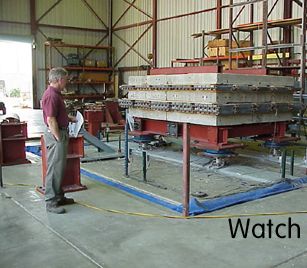

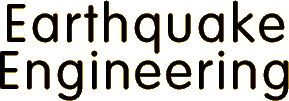



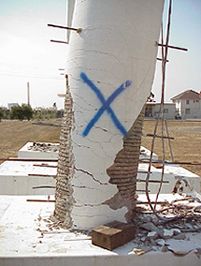
Don
Clyde, engineer at the U.C. Berkeley Earthquake Simulator Laboratory,
eyeballs his next test on the world's largest shake table.
The
Earthquake Simulator Laboratory
is the place where engineers go to
find out how and where structures such as bridge supports, wood-framed
houses, and high-voltage transformers fail under the kind of stress and
strong motion that earthquakes generate. Tools such as the largest shake
table in the world and a 4,000,000 lb. capacity Universal Testing machine
push full-scale replicas of common construction elements to their limits.
The evidence of failure or deformation is analyzed and then incorporated
into design plans for a stronger and more safely built environment. The
Hearst Mining Building (see below), a 92 year-old architectural prize
also on the U.C. Berkeley campus, is currently undergoing a $66.7 million
retrofit and seismic upgrade. The entire foundation will be reconstructed
using state-of-the-art base isolation mounts. These 2 ton "shock absorbers"
isolate the foundation of the building from the ground, allowing the earth
to move independent of the building in the event of an earthquake.
The
shake table "graveyard": tweaked Caltrans test pillars await their fate.


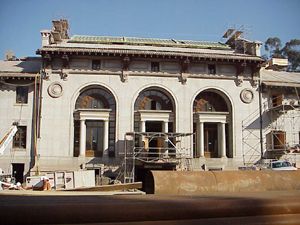
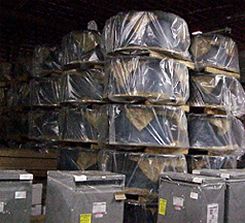

Just
800 feet away from the closely watched Hayward fault, the Hearst Mining
Building is being retrofitted to rest on 134 base isolation mounts.
The
isolaters await installation at a warehouse in Emeryville.

